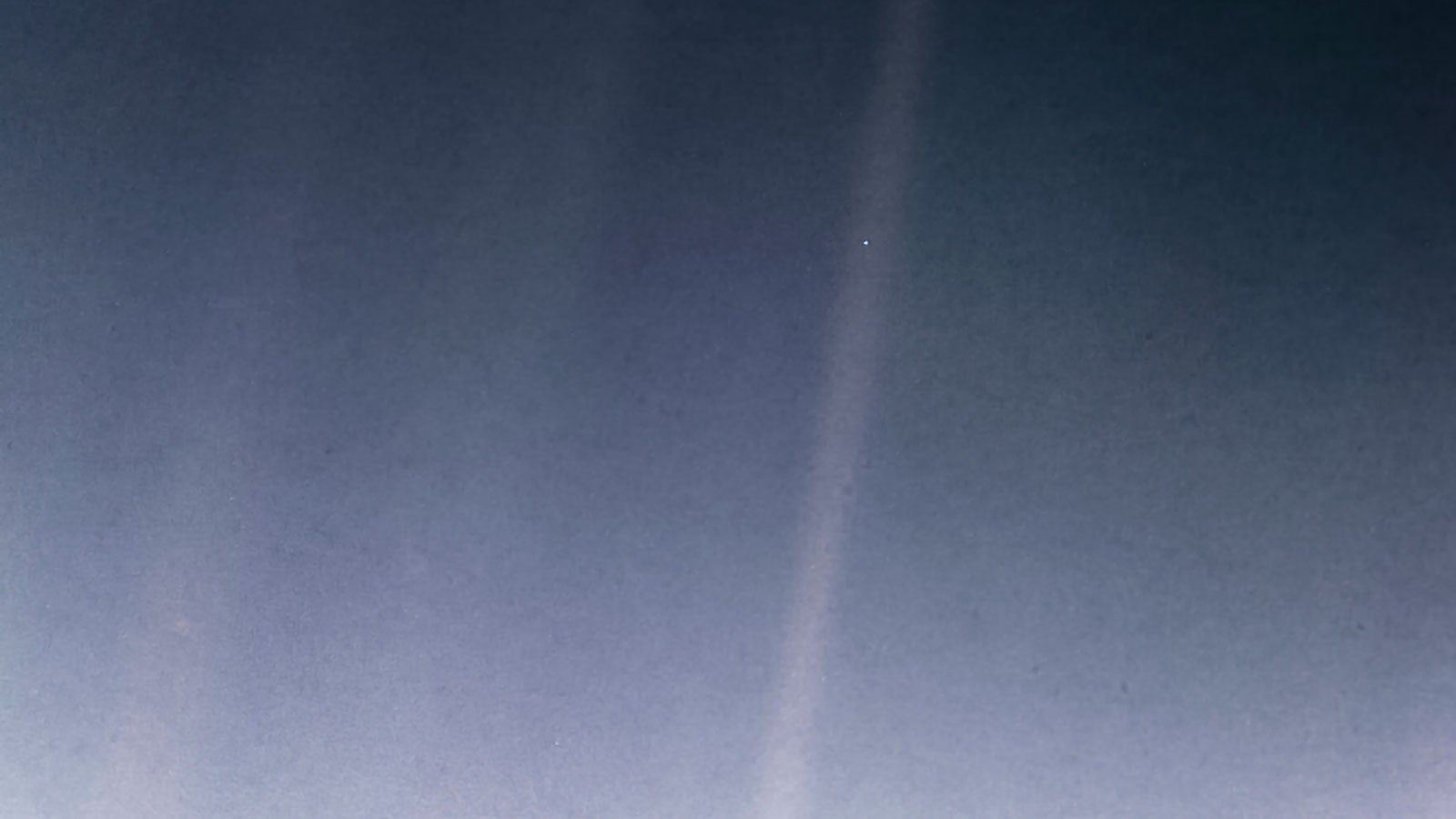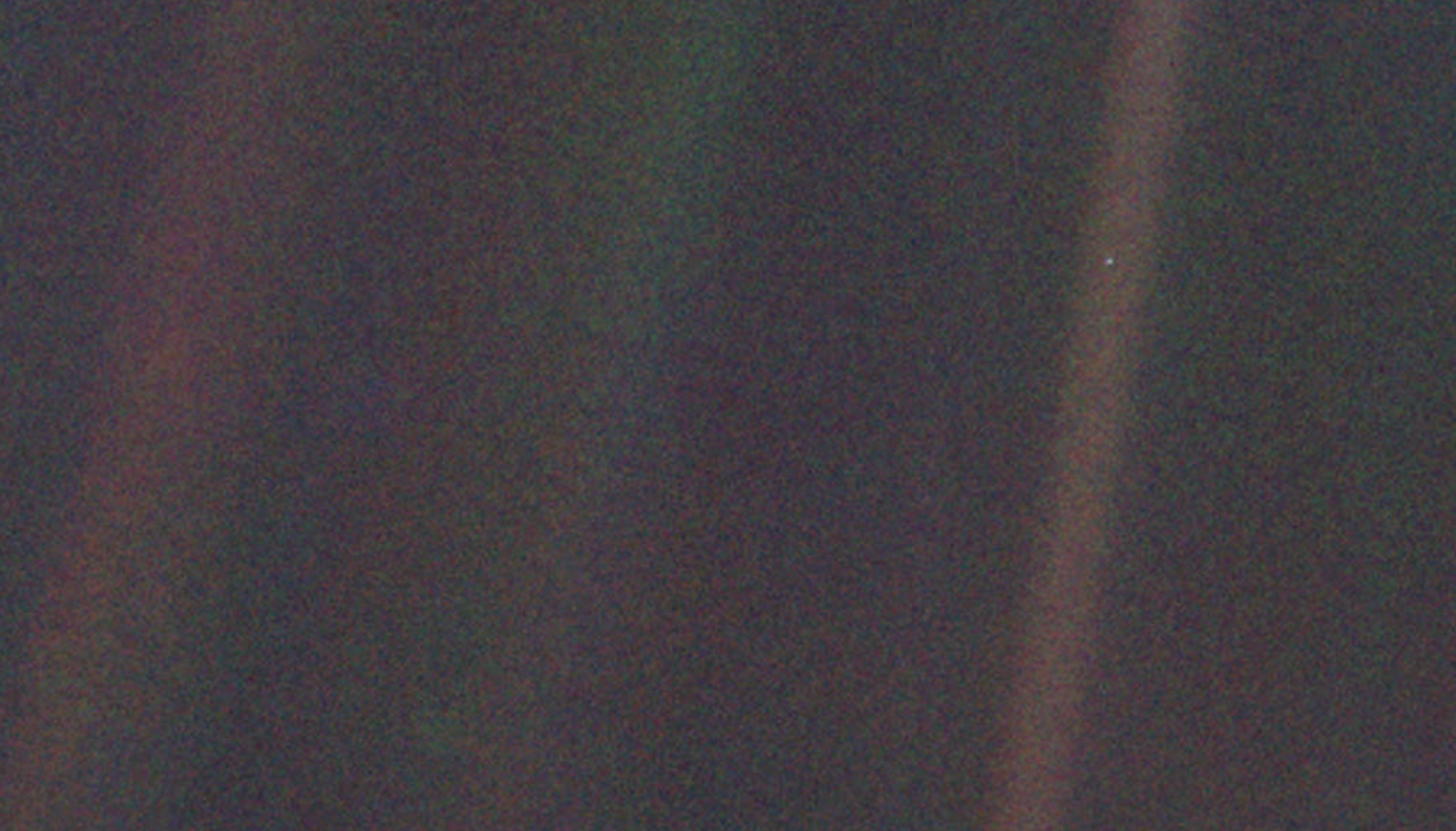NASA Releases Remixed Version Of Iconic 'Pale Blue Dot' Photo
by George Dvorsky
A humbling photo of Earth taken by the Voyager 1 probe from a distance of 6 billion kilometres has been reprocessed by NASA to commemorate the 30th anniversary of the image.
On February 14, 1990, NASA’s Voyager probe turned its camera toward Earth, resulting in one of the most awesome photos ever taken.
Unlike other photos of Earth, in which clouds and continents are visible, this photo portrayed our planet as a tiny star-like speck of light, or a “pale blue dot,” as the late astronomer Carl Sagan would later describe it. Voyager 1 delivered to us a view of Earth we were not accustomed to.
“Look again at that dot. That’s here,” wrote Sagan in his 1994 book Pale Blue Dot: A Vision of the Human Future in Space. “That’s home. That’s us.”
To celebrate the 30th anniversary of this iconic image, scientists at NASA’s Jet Propulsion Laboratory decided to take a new look at this old photo. Using new image-processing tools and techniques, and with an eye toward “respecting the intent of those who planned the image,” in the words of a NASA press release, the photo looks cleaner, crisper, and brighter than ever before (a full version of the reprocessed image can be found here).

The primary exploration phase of the Voyager 1 mission had come to a close when this photo of Earth was taken. Launched in 1977, the probe had performed flybys of Jupiter and Saturn, acquiring unprecedented close-up photos of the gas giants.
In early February 1990, Voyager was 6 billion kilometres from Earth, or 40.11 AU, in which 1 AU is the average distance of Earth to the Sun. The probe was beyond Neptune and situated around 32 degrees above the ecliptic plane of the solar system. Voyager 1 was so far away at the time the photo was taken that light from Earth took 5 hours and 36 minutes to reach it. We know we’re looking at the past when we view the cosmos, but rarely do we consider our own technology looking back at us through time.
Voyager 1 was able to view our planet through three colour filters: violet, blue, and green. Combined, these spectral filters allowed for a false-colour view. The resulting image showed Earth as a light blue speck—less than a single pixel across—floating in space and intersected by a dramatic ray of scattered sunlight, an artefact of Voyager’s camera.
“The planet occupies less than a single pixel in the image and thus is not fully resolved,” according to NASA.

The newly processed version of Pale Blue Dot is not as dark as the original, and its various artifacts, mostly those caused by the extreme magnification and the brightness of the Sun, were minimized.
“The brightness of each colour channel was balanced relative to the others, which is likely why the scene appears brighter but less grainy than the original,” explained NASA in a press release. “In addition, the colour was balanced so that the main sunbeam (which overlays Earth) appears white, like the white light of the Sun.”

It was also during this time in 1990 that Voyager captured similar views of Neptune, Uranus, Saturn, Jupiter, Earth, and Venus (pictures of Mars, Mercury, Pluto were not possible) and the Sun. Collectively, these photos are known as the Family Portrait of the Solar System, an idea conceived by Sagan, who died in 1996. Interestingly, these photos were not planned in advance, and Sagan had to argue repeatedly for their importance.
Pale Blue Dot ended up being a kind of final hurrah for the Voyager 1 mission. The Voyager team permanently shut down the probe’s camera 34 minutes after it snapped the 60 photos that now make up the Family Portrait mosaic, which they did to conserve energy.
This and other power-saving actions have allowed Voyager 1 and its sister probe, Voyager 2, to keep trucking away during this extended phase of the mission. The probes, which have passed through the solar system’s heliosphere, still have several more years of life left in them.